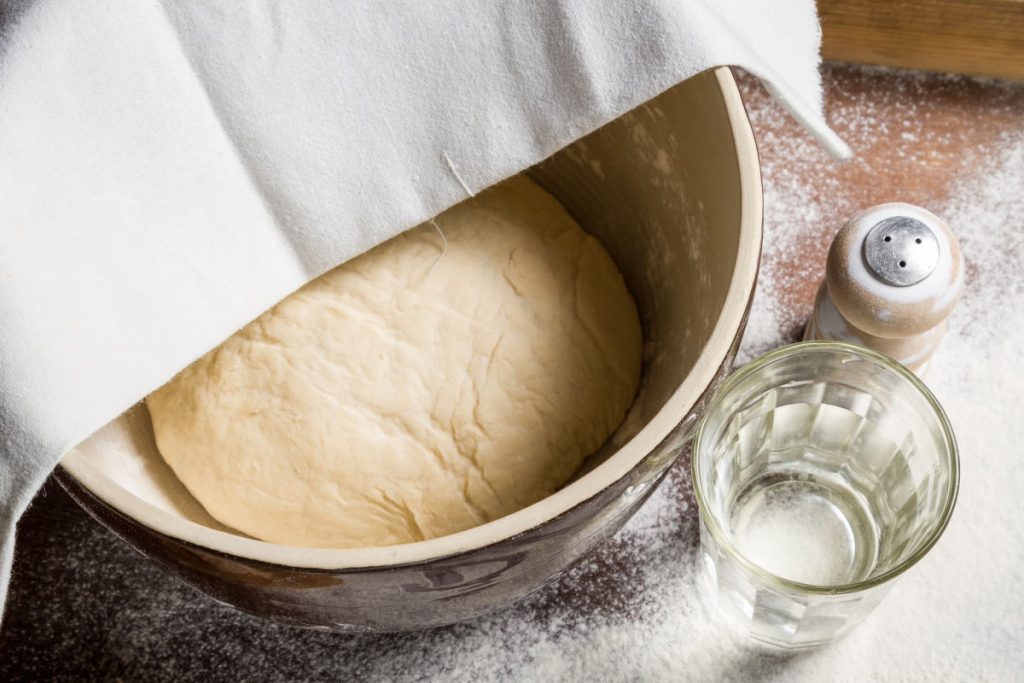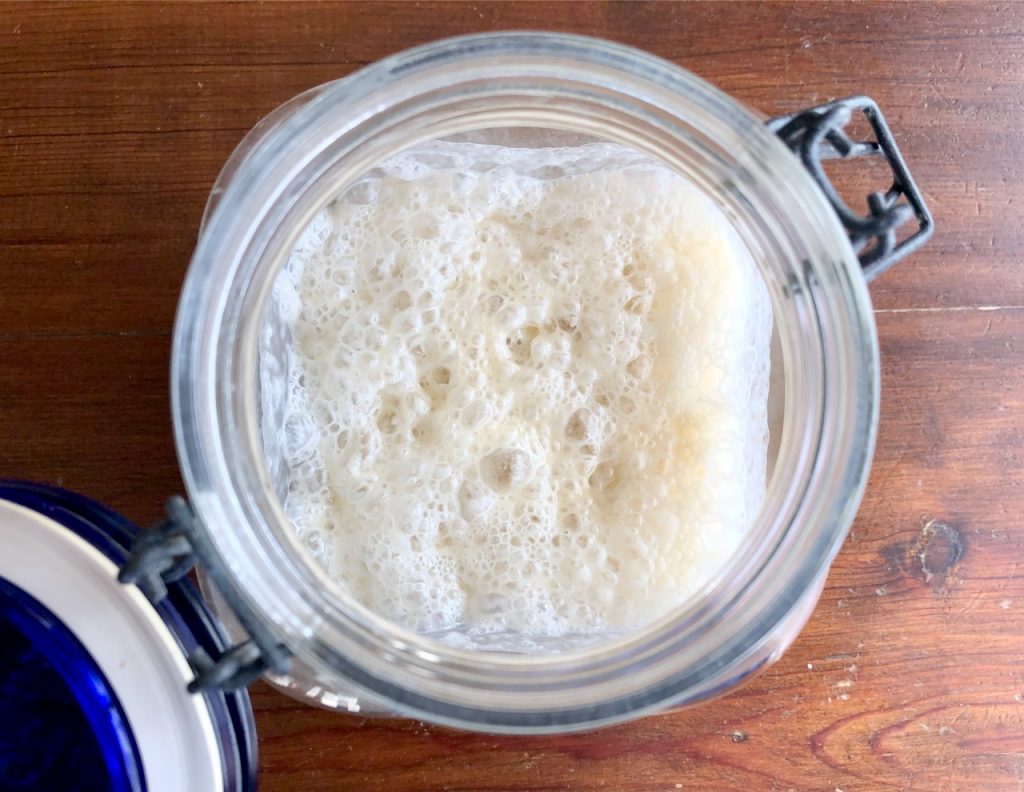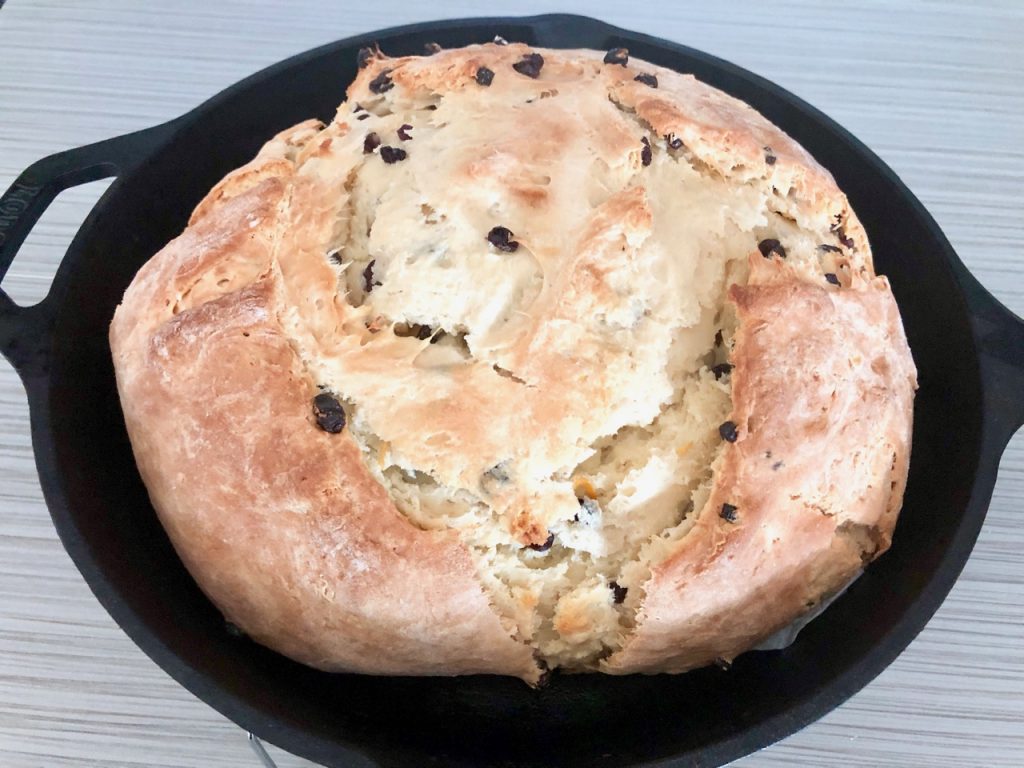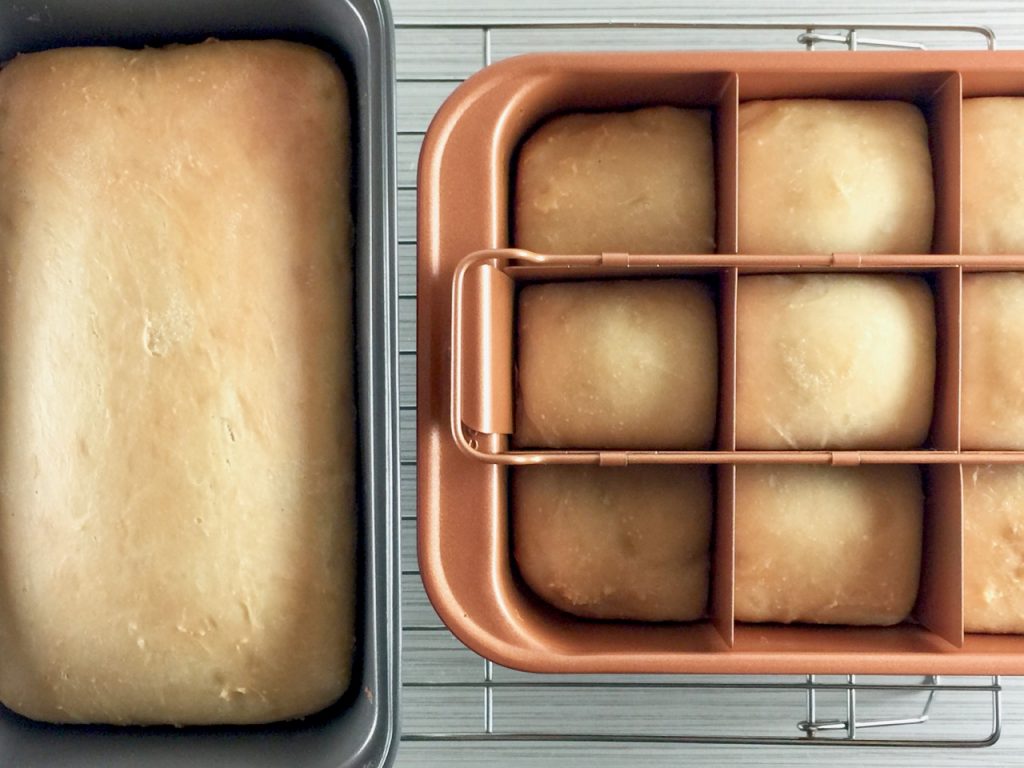
If you’re running low on yeast, you’ve come to the right place. I’ve got a great solution for you.
MAKE YOUR OWN STARTER.
An active sourdough starter is maintained with regular feedings, so you can bake anytime. If you have a strong starter, you won’t need to bake with additional yeast.
Traditional sourdough starters can be finicky, and this is no time to risk a fail. Amish Friendship Bread starter is considered “fool-proof” in that the use of commercial yeast to get it started ensures a healthy start and makes the starter much easy to maintain. If you only have a little bit of yeast left, don’t use it up on a single recipe. Make a starter, and you’ll be able to bake yeasty breads and cakes whenever you want (plus, you can freeze the excess so you can always keep starter on hand — this is HUGE, friends).
Amish Friendship Bread starter is sweeter than a regular sourdough starter, and uses one packet of commercial yeast (or ¼-ounce or 2¼ teaspoon active dry yeast) to kick things off. Once it gets going, you’re golden.
Here are a few things to consider:
- Your kitchen needs to be the right temperature (see this post)
- It needs to be regularly fed (see this post)
- You can make a smaller amount of starter if you’re conserving ingredients (recommended once you’ve established a healthy starter. See this post)
- You can freeze your starter for future use so you’ll always have a bag of yeasty starter on hand (see this post)
- It’s hardy and flexible, even if you forget to feed it (see this post)
Need an Amish Friendship Bread primer or 101? Check out this Quick Start Guide!
Some of the more traditional bread recipes in the Recipe Box may use additional yeast, but if you’re conserving your yeast, you can either choose another recipe or attempt the recipe using a starter that’s been fed in the past 12-24 hours and is actively bubbly/growing. The Recipe Box contains over 200 recipes you can make with your 1 cup of starter, so you’ll never run out of ideas of what to bake.

Here are the top recipes from the Recipe Box that don’t require additional yeast:
- For sandwiches and soup: Irish soda bread, sweet white sandwich bread, or cornbread
- The original Amish Friendship Bread recipe (yields two loaves, freezes beautifully)
- Cheer everyone up with these cinnamon rolls
- People love this one-bowl banana bread (and there’s a giveaway going on for a succulent gift box until 4/10/20!)
- A pan of decadent brownies
Almost all of our sweet bread, muffins, and cakes in our Recipe Box are ready to make with your starter at any stage (as well as these scone and cookie recipes).

Another popular starter, made from potato flakes
Another popular option is the potato flake starter, which yields wonderfully soft rolls and cakes.

Starter links
- For the regular Amish Friendship Bread starter: https://www.friendshipbreadkitchen.com/amish-friendship-bread-starter/
- For the potato flake starter: https://www.friendshipbreadkitchen.com/potato-flake-starter-afb/
Are you running out of yeast? What are your solutions or suggestions? Feel free to share below, and stay healthy, friends!
Is there a general formula you use to substitute AFB starter into a recipe that does not originally have it? I am looking at a recipe for Texas Kolaches, it calls for yeast, but I’m wondering if I could nix the yeast and maybe use a smaller amount of flour/milk/sugar and use my starter instead? What do you suggest?
You’ll have to experiment because everyone’s starter is different and the rising power of an AFB starter is not always as robust as, say, a sourdough starter or even yeast. In general we don’t recommend swapping AFB starter for a rising agent in a recipe that requires significant loft, but if you’ve made bread with your starter before and feel confident that it can handle the job, give it a try and keep us posted!
I made your dinner rolls tonight. When I made the dough I had to add a full extra cup of flour to get the dough to not be gloppy. I baked them for 10 minutes per instructions, but they were doughy in the middle. I baked them another 10 minutes and they were browned on top, but still doughy in the mixdle. I tried to eat part of one and they tasted raw. What on earth did I do wrong?
Hi Patricia! I’m so sorry it didn’t work out for you! This is a pretty reliable recipe but it does depend on a few factors. How active was your starter when you made the recipe? Were you able to get a good rise before you baked them? Did you use the additional yeast as well? I’m assuming you mean the 30-minute dinner rolls. You can post a picture of them here and we can troubleshoot it together: https://www.facebook.com/groups/amishfriendshipbread/
I saw at one spot you said you can bake at any stage of the starter? So, I could bake at day 8 I stead of waiting until day 10?
Hi Patricia — if your starter is new (i.e. made from scratch on Day 1 vs having been give a starter from someone else on Day 1), then you want your starter to go through the 10-Day cycle before baking with it. Once you’ve gone through the 10-Day cycle (a feeding on Day 6 and again on Day 10), and the starter has had that time to grow more robust, you can remove a cup anytime to bake with. Just remember that some recipes which require significant loft or rise, like one of our more traditional sourdough bread recipes, work best with a starter that’s been fed in the past 24 hours and is showing a lot of bubbly activity. For most of the other recipes on the site, you are good to go!
I have NO yeast and I would like to what the best ingredients needed to make homemade yeast. I want to make a potato starter as well as the regular starter. HELP
I made the starter for the Friendship bread but can’t find a recipe for the regular white loaf bread.
Hi Michelle! There are several different kinds here: https://www.friendshipbreadkitchen.com/category/recipes/sourdough-breads/. Have fun baking!
Hi Michelle — here you go:
https://www.friendshipbreadkitchen.com/category/recipes/sourdough-breads
https://www.friendshipbreadkitchen.com/category/recipes/biscuits-buns-and-rolls
xo
Do you have a recipe for crescent rolls using the starter?
Thanks!
No crescent rolls (yet!) but you can adapt this pizza dough recipe (or the cinnamon roll recipe). I’ll put this on the list to adapt, but here’s a quick hack:
Once the dough is ready to be used (after rising), divide the dough in half. Roll each half into a circle, about 12 inches, and brush each disk with softened butter, about 1/8 cup each. Cut into wedges. Starting with the wide end of one wedge, begin rolling. Place finished rolls on a baking sheet lined with parchment paper (tuck the seam under). Drape loosely with a dish towel or plastic greased plastic wrap and let rise in a warm spot until double (this may depend on the activity of your starter and temperature in your kitchen, so it could take up to 90 minutes or two hours). Bake at 400 F (205 C) for 12-15 minutes or until golden brown. Remove from oven and brush the tops with butter. 🙂
Can the starter be made with a non-dairy milk, like oat milk or almond milk?
It can be made with water.
It can be made with water or any nut milk and most non-dairy milk (if there are no funky preservatives or chemical additives). 🙂
Can the starter be used to make regular bread that is way lower in sugar content?
Hi MIchelle! Yes, you can reduce the amount of sugar in the starter. Once the starter has started, you can maintain with mlk and flour, or even water and flour, though you would then be making a traditional sourdough starter which can sometimes be a little finicky. If you use an Amish Friendship Bread starter as a base, however, it’ll sustain for a while. Hope this helps!
Can you make a gluten free starter with almond flour?
Hi Mary! Unfortunately not, or at least I haven’t figured it out yet. I’ve seen a few people on the web with recipes using almond or coconut flour, but I’ve had mixed (and mostly disappointing) results so it’s hard for me to recommend it to people right now.
You can make a gluten-free starter with certain GF blends like King Arthur Gluten-Free Measure for Measure Flour, and I know others have made starters with other GF grains, like brown rice flour, sweet rice flour, and/or buckwheat.
Yeast needs sugar, which it can make from starch. Almond four is not as high in carbs as wheat flour so it may not work as well. Why not try one of the many excellent potato based starters? Potato’s are gluten free and full of starch.